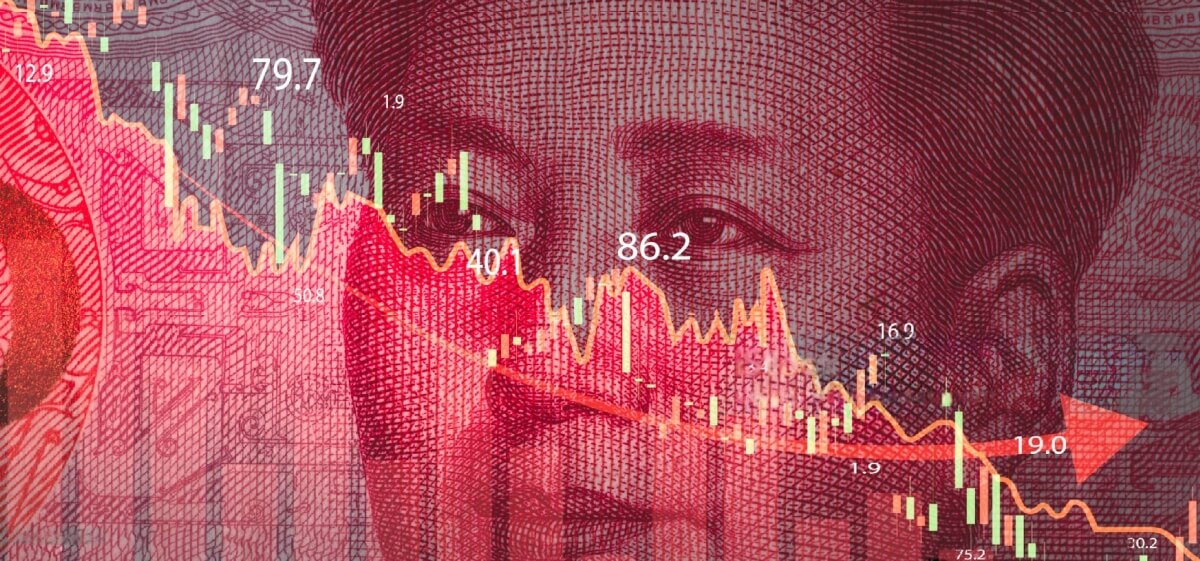Key Insights
- China experiences a surge in capital flight as economic uncertainties persist and the real estate market slumps.
- $53.9 billion was sent overseas on behalf of banking clients in 2023, marking the largest monthly outflow since January 2016.
- The yuan’s value has declined to around 7.30 against the US dollar, approaching the 7.34 level from September.
In recent weeks, there has been a noticeable surge in capital flowing out of China, a trend that’s exerting downward pressure on the yuan. This exodus of capital is closely tied to the prevailing economic uncertainties and the ongoing real estate market instability, which have left investors cautious.
The persistent outflows have become a prevalent theme in the Chinese financial landscape in the year 2023, with a staggering $53.9 billion being funneled overseas on behalf of banking clients, according to data sourced from the State Administration of Foreign Exchange, as reported by Bloomberg.
Notably, this figure represents the most substantial monthly outflow since the tumultuous days of January 2016.
China’s yuan stumbles amid economic woes
Consequently, the yuan has seen a significant dip in value, hovering around 7.30 against the US dollar, inching closer to the 7.34 level recorded back in September. This persistent downside pressure has exerted a notable strain on both the offshore and onshore variations of the currency, notwithstanding the considerable efforts by Beijing to bolster its economic resilience.
Complicating the situation further, the efficacy of stimulus measures has been hampered by surging interest rates in the United States, which have created the widest yield gap between American and Chinese bonds in over two decades. US Treasurys have become an exceptionally attractive option for investors due to a historic bond sell-off that has propelled their yields to levels not seen since 2007.
Apprehensions regarding the potential adverse impact of increasing US interest rates on global liquidity have triggered a series of events. China’s technology-oriented Star 50 Index plummeted to the lowest point in its three-year history, while the benchmark CSI 300 Index slumped to its lowest level since early 2019.
Moreover, global funds have been shedding Chinese onshore equities at an alarming rate, releasing a substantial $1.6 billion through Thursday. On a broader scale, China’s current account and capital account experienced worrying declines throughout the month of September, raising further concerns about the stability of the nation’s financial position.
Foreign investors have also shown a reduced appetite for Chinese sovereign bonds, with holdings plummeting by $1.85 billion. These cumulative indicators suggest that China’s economic challenges are taking a significant toll on its financial markets, with far-reaching implications that resonate on the global stage.

